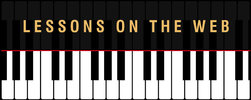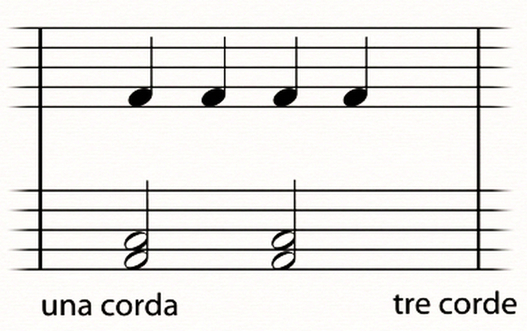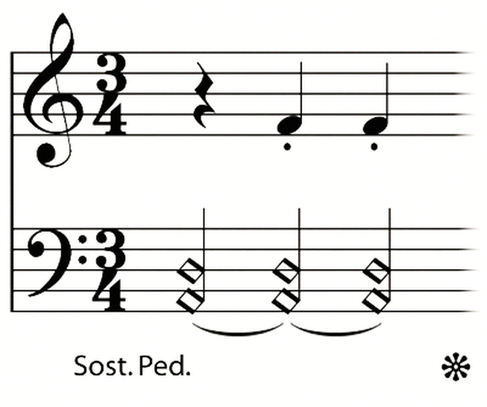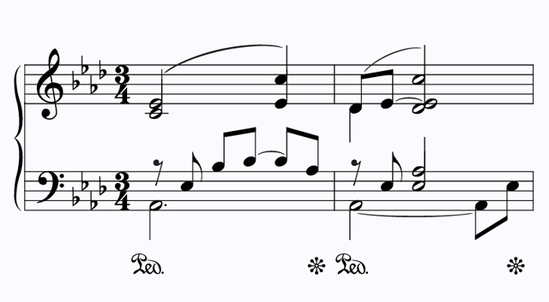|
It's no wonder that the Piano is known as "the King" of instruments! Not only do we piano players have to use both hands at the same time playing in totally different clefs...we also have to use our feet! That's right...there are 3 different foot pedals located at the bottom of the piano, that are used while playing with both hands on the keyboard. A lot of pianists feel a bit threatened by the foot pedals because we don't tend to use them when we first start learning to play. Once we've learned both hands on the keyboard and are playing comfortably we can move on to adding in our feet and conquering the mystery surrounding piano pedals. The most important questions to answer are:
Let's start with the left pedal. The left pedal is called the Una Corda pedal, or the Soft Pedal. Using this pedal will result in a softer sound for any note that you play while holding down this pedal. Typically, when you strike a key on the piano, a hammer will hit 3 strings at one time to create the note sound. When you use the Soft Pedal, only one (sometimes 2, depending on the size of your piano) note is allowed to be struck by the hammer, resulting in a softer sound. In piano music, anytime you see the words "una corda", you will know to use the Soft Pedal. Also, when you can tell when to release the Soft Pedal when you see the words "tre corda"...which simply means 3 chords or strings. Here's what it looks like. Now, let's look at the middle pedal. The middle pedal is called the Sostenuto Pedal. This pedal is really neat, because it allows you to sustain specific notes without having to sustain all of the notes that you are playing. What this mean is that you can hold certain bass chords or notes when you hit the Sostenuto Pedal, and play other lyrical lines with the right hand that won't be sustained. Only the notes being played when you press the Sostenuto Pedal will be sustained. You can tell when you need to use the Sostenuto Pedal when you see this type of notation in your music. Notice the * sign towards the right. This indicates when you are to lift the Sostenuto Pedal. Next let's move to the 3rd and final pedal. The right pedal is called the Sustain Pedal and is the most used pedal of all 3. Most of us will learn to use this particular pedal before the other ones. When we play notes on the keyboard, a hammer strikes a group of strings for each note, and afterwards, a damper lowers onto the unplayed notes, preventing them from being heard. When we use the Sustain Pedal, the dampers aren't allowed to hit the other notes and keep them silent. This allows the other notes to resonate with the active chords or notes, adding a deeper dimension and depth to the sound. The notes being played will also keep sounding after they have been played. Whenever you see this type of notation in your music, you will know to use your Sustain Pedal. Again, you start using the Pedal where it says Ped., and lift it when you see the *asterisk. With just 3 foot pedals to learn in piano playing, it's not as hard as one might imagine!... and using them adds in so much expression and richness to your sound, it's worth getting familiar with them and comfortable using them.
The next time you sit down at your piano, experiment a little with each of the pedals and see how they effect your sound. Which one do you like the best? Try even mixing them up...the possibilities are actually endless. Now that you can easily decipher each one's purpose, you'll be using your feet just as much as your hands to create that perfect sound that only you can make! As always, stay tuned to LessonsOnTheWeb to learn much more! Leave a Reply. |
AuthorMost blogs written by Archives
June 2020
Categories
All
|





 RSS Feed
RSS Feed